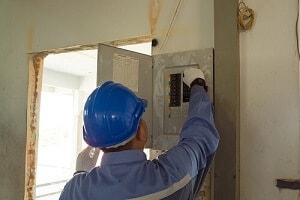 Some electrical issues are more common than you think. They occur in almost every home with electricity and while they may be no one’s fault sometimes, it’s often because your electrical system is subject to getting worn out. Read on as we discuss the most common electrical issues in Los Angeles homes and how to handle them.
Some electrical issues are more common than you think. They occur in almost every home with electricity and while they may be no one’s fault sometimes, it’s often because your electrical system is subject to getting worn out. Read on as we discuss the most common electrical issues in Los Angeles homes and how to handle them.
- Broken light switch
A broken light switch in your Los Angeles home can be due to any number of reasons. It could be due to damage because the switch is old, improper wiring and circuit faults, or the switch may have been overridden.
To fix this, turn off the circuit breaker and remove the faceplate with a screwdriver. Turning off the circuit breaker earlier would help you identify which one is broken. Ensure there is no electricity in the wires and disconnect the switch to fix it.
Type of electrical issue – Harmless.
- Cut extension cords
Extensions often come in handy in your Los Angeles home and can also easily get damaged. To fix a cut or damaged extension cord, cut off the old plug and peel back the insulation jacket to expose the wires. Strip each wire and connect/screw them to the new plug. Twist each wire and screw black to gold, green to green, and white to silver at the back of the plug. Close the plug.
Type of electrical issue – Harmless.
- Flickering lights
This horror scene trick can never be good news. Flickering lights often indicate a more serious problem such as poor connections, sparks, overheating, and more. They should be looked at and fixed as soon as possible. Contact an electrician if you experience flickering lights.
Type of electrical issue – Hazardous.
- Electric shocks
That unexpected zap when plugging in a device could either be no-problem news or bad news. Test the appliance by plugging into another outlet. A repeated shock indicates the appliance might have a fault or problem with your wiring. Call an electrician when you experience electric shocks to find the cause and solution of the problem.
Type of electrical issue – Possibly hazardous.
- Loose outlets
Loose outlets can be easy to spot when you’re trying to plug in something. If it’s bad enough, you might have the outlet hanging out of the socket or wall. Turn off the breaker to stop power from coming through the outlet. Use a voltage tester or power testing tool to confirm there’s no power in the outlet. Remove the cover plate and add new outlet shims until the outlet can fit firmly on the wall. Screw the cover plate back in.
Type of electrical issue – Harmless.
Circuit overload is one of the biggest causes of frequent breaker tripping. This means that there are not enough power points in your home electrical system. Overload can lead to more than normal trips, which can be dangerous.
Calling an electrical technician is the best solution, as your electrical system might need an upgrade or repairs.
Type of electrical issue – Hazardous.





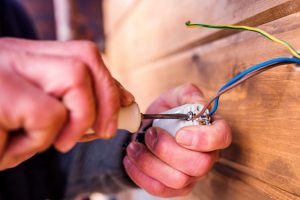 A new home comes with the excitement of setting up things just the way you like them. You could be eager to try out different colors and textures; explore flooring options, window placement, and so on. Getting everything done to your liking is what makes your new home feel truly yours. But, in all your planning, it’s important to consider creative electrical wiring options that may come in handy sooner than you know.
A new home comes with the excitement of setting up things just the way you like them. You could be eager to try out different colors and textures; explore flooring options, window placement, and so on. Getting everything done to your liking is what makes your new home feel truly yours. But, in all your planning, it’s important to consider creative electrical wiring options that may come in handy sooner than you know.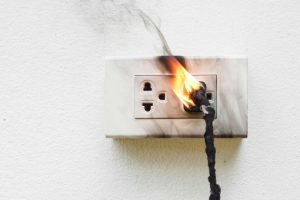
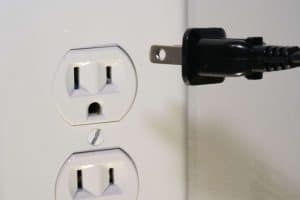 This question would often come up if you are considering doing some electrical work yourself. While DIY is great and even cost-effective for some tasks around the home, electrical works are very different and some rules apply.
This question would often come up if you are considering doing some electrical work yourself. While DIY is great and even cost-effective for some tasks around the home, electrical works are very different and some rules apply.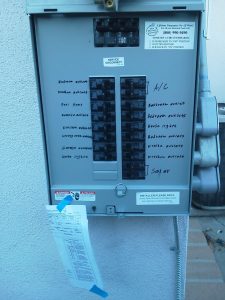 Your home’s electrical panel is the source of electricity to your home. It is where the power from your utility company is distributed across circuits, outlets, and all areas where they are needed in the home.
Your home’s electrical panel is the source of electricity to your home. It is where the power from your utility company is distributed across circuits, outlets, and all areas where they are needed in the home.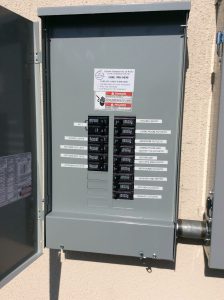 A refrigerator is almost a must-have in modern homes and as such various models hit the market every day trying to meet up with homeowners’ needs. When you purchase a new refrigerator, it’s fine to wonder if there will be any complications with your home’s electrical system.
A refrigerator is almost a must-have in modern homes and as such various models hit the market every day trying to meet up with homeowners’ needs. When you purchase a new refrigerator, it’s fine to wonder if there will be any complications with your home’s electrical system.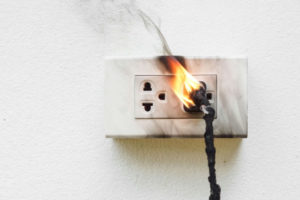 The wiring in your home has a lot to do with your home’s electrical safety and capability. A
The wiring in your home has a lot to do with your home’s electrical safety and capability. A  No one likes to experience mysteries in their own home. When it comes to
No one likes to experience mysteries in their own home. When it comes to 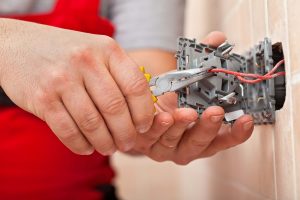 For your home wiring system, there is such a thing as pre-wiring or wiring for the future. This simply means applying pre-wiring tips that may become vital in the future for adding categories like audio, video, home security, network & Wifi, cable, satellite, and internet.
For your home wiring system, there is such a thing as pre-wiring or wiring for the future. This simply means applying pre-wiring tips that may become vital in the future for adding categories like audio, video, home security, network & Wifi, cable, satellite, and internet.